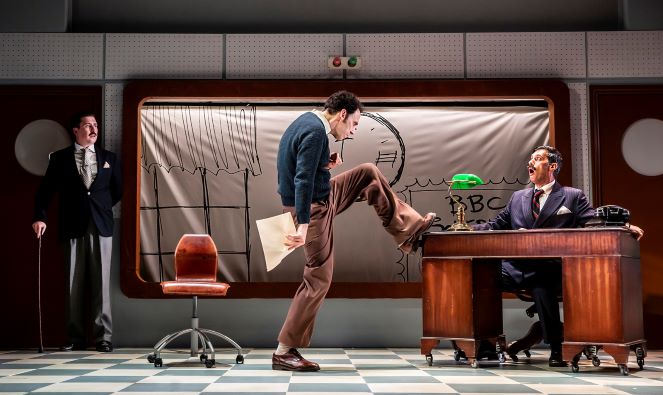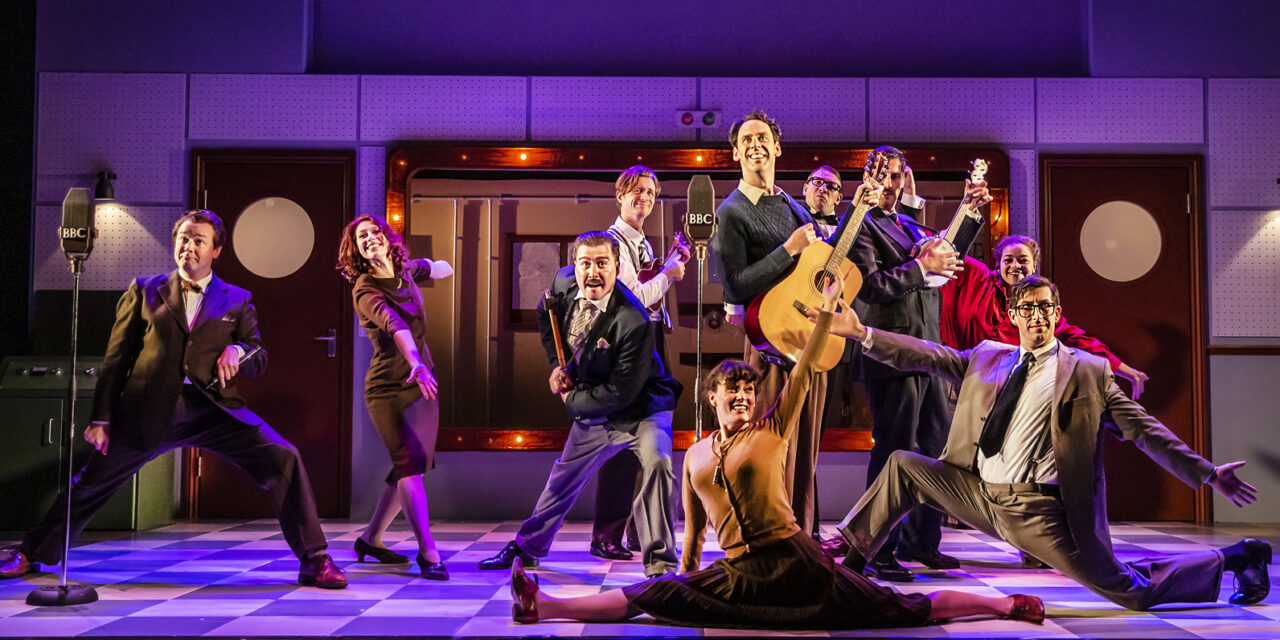
27 September – 1 October
Throughout the fifties, BBC Radio comedy was dominated by The Goon Show. The show was anarchic, absurd, and hugely popular, and its creative genius was Spike Milligan who wrote and performed in over 200 episodes between 1951 and 1960. Now Ian Hislop and Nick Newman have written a sparkling and moving play, a tribute to the great man.
The play opens in a BBC Radio studio with its traditional ribbon mics, its VU meter and its ubiquitous tea trolley. We meet Janet (Margaret Cabourn-Smith) from sound effects with her magical tray of household objects that can produce anything from a squeaky door to an explosion.
Explosions loom large in Spike’s mental world, and they become a critical link between his terrifying wartime experiences and their reimagining through the humour of the Goons. The lunacy of war and the absurdity of deference to an inept officer class are both resurrected in the radio show and in Spike’s life through his unflagging resistance to authority and refusal to conform. Scripts are written in the pub, minutes before or even after the deadline. The comedy becomes increasingly irreverent, to the annoyance of his BBC masters who seem to want to squash him even when The Goon Show has garnered over 4 million listeners.
There are plenty of laughs in Spike, even as it shows the murderous pressure of writing to a deadline and the toll it can take on a man’s health and private life. In the course of their research, Hislop and Newman were given access to an archive of letters between Spike and the BBC, and this troubled relationship provides the crux of the drama. Spike always felt undervalued and his complaints to the management were to continue throughout his life. He wrote almost every episode of The Goon Show. He also performed. Yet he was paid much less than the two other performers, Peter Sellers and Harry Secombe, who were becoming increasingly known in film and TV.
The production, directed by Paul Hart, moves at a cracking pace with a seamless interplay of sound, light, music, and script. Movement director Anjali Mehra ensures a sense of purposeful choreography in the way the characters interact. Every inch of the stage is used to powerful effect.
Robert Wilfort is brilliant as Spike, energetic, unpredictable, and affecting with jerky mannerisms and sudden volatile mood shifts. Jeremy Lloyd as Harry Secombe provides the warmth and humanity in the trio, and Patrick Warner is charismatic as the mercurial lecher Peter Sellers. Other parts have an edge just this side of caricature. This works well in a play where everything is larger than life.
There is a hint of nostalgia in the play. Spike lived until 2003 and many will remember him as a grumpy old man. But Spike is essentially a show about young men, their creativity and arrogance, the way they bounce off each other to create a humour that touches our fundamental yearning for chaos in a world of rules. The Goons ignited a spark that led to Beyond the Fringe, the Pythons, French and Saunders and many more. And just as Spike Milligan needed the companionship of colleagues to survive in the war, he needed the brilliance of his co-performers to inspire him in the 1950s. But the heart of the Goons was Spike, and this is a well-deserved and beautifully crafted tribute to him.
★★★★★ Ros Carne 28 September 2022
photo credit; Pamela Raith Photography


